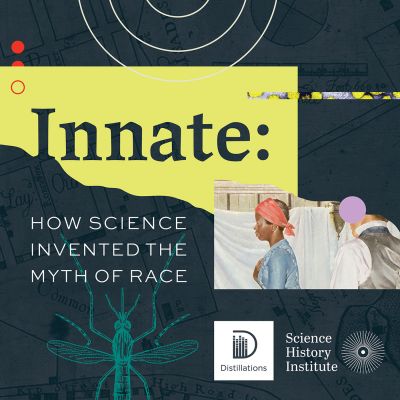Each episode of Distillations podcast takes a deep-dive into a moment of science-related history in order to shed light on the present.
https://www.sciencehistory.org/distillations/podcast
Rare Earths: The Hidden Cost to Their Magic, Part 1
The 17 rare earth elements are often called the spices or vitamins of industry. While we don’t need much of them, they’re sprinkled in small amounts through our most powerful, futuristic, and dare we say it, magical tools. They power our iPhones and computers; they’re in wind turbines and hybrid cars. They’re in dental implants, X-ray machines, and life-saving cancer drugs. They have unusual magnetic and electrical properties that make our gadgets faster, stronger, and lighter. And we've all been coasting along enjoying their magic for a while now. In fact, we've come to expect magic. But magic comes at a cost, and in the case of mining and processing rare earths, that cost is environmental devastation. Most of us in the Western world aren’t aware of the destruction/ because most rare earths are mined elsewhere. But some scientists are trying to find a more environmentally sound way to get them.
CreditsHosts: Alexis Pedrick and Elisabeth Berry Drago
Reporter: Rigoberto Hernandez
Senior Producer: Mariel Carr
Producer: Rigoberto Hernandez
Audio Engineer: James Morrison
Music courtesy of the Audio Network, Blue Dot Sessions, and the Free Music Archive.
Abraham, David. Elements of Power. New Haven, CT: Yale University Press, 2015.
The Californian Rare Earths Mine Caught between Trump and China. Bloomberg News, September 26, 2018.
“China-Japan Boat Crash Video Posted.” Al Jazeera, November 5, 2010.
“China Threatens to Cut Off Rare Earth Minerals as Trade War Escalates.” MSNBC, May 30, 2019.
“Colorado Experience: Uranium Mania.” Rocky Mountain PBS, November 2, 2017.
“Critical Materials Strategy.” U.S. Department of Energy, December 2010.
Desai, Pratima. “Tesla’s Electric Motor Shift to Spur Demand for Rare Earth Neodymium.”Reuters, March 12, 2018.
Gifford, Rob. “Yellow River Pollution Is Price of Economic Growth.” National Public Radio, All Things Considered, December 11, 2007.
Haxel, Gordon, Hedrick, James, Orris, Greta. “Rare Earth Elements—Critical Resources for High Technology.” U.S. Geological Survey, Fact Sheet 087-02, November 20, 2002.
Kalantzakos, Sophia. China and the Geopolitics of Rare Earths. New York: Oxford University Press, 2018.
Kean, Sam. “Ytterby: The Tiny Swedish Island That Gave the Periodic Table Four Different Elements.” Slate, July 16, 2010.
Kim, Meeri. “Exposing the Trail of Devastation.” Sarah Lawrence College Magazine,” Fall 2018.
Klinger, Julie. Rare Earth Frontiers. Ithaca, NY: Cornell University Press, 2017.
Lovins, Amory. “Clean Energy and Rare Earths: Why Not to Worry.” Bulletin of the Atomic Scientists, May 23, 2017.
“Obama Denounces China on Rare Earth Elements.” AFP News Agency, March 13, 2012.
“PBS NewsHour; June 14, 2010 7:00 pm–8:00 pm EDT.” American Archive of Public Broadcasting (WGBH and the Library of Congress), Boston and Washington, DC. Accessed June 24, 2019.
“Running from Rare Earth Metals.” Bloomberg, June 30, 2015.
Salomon, Charlotte Abney. “Finding Yttrium: Joan Gadolin and the Development of a ‘Discovery.’” CHF Brown Bag Lecture Series, March 10, 2015.
“Story of Color Television.” RCA, 1956.
Thomson, Gene. “Hot Canyon.” Ames Laboratory, June 18, 2012.
Turner, Roger. “Material Matters: The Past and Present of Rare Earth Elements Essential to Our Future.” Joseph Priestley Society Lecture, Science History Institute, Philadelphia, February 14, 2019.
